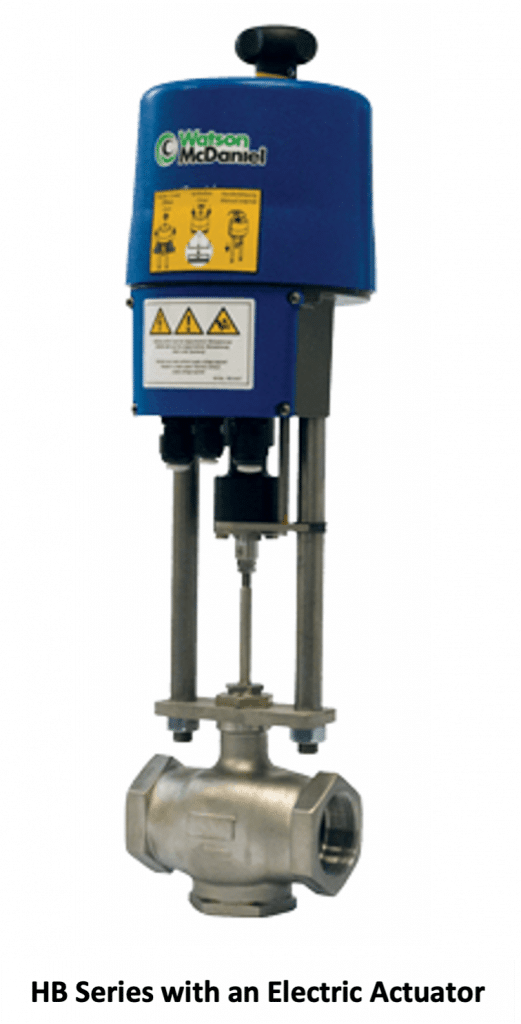Valve Sizing
Control Valves are sized based on the flow required through the valve (capacity) at a given pressure drop. When using control valves for Pressure Reducing applications, sizing is easy and based on the Inlet Pressure, Desired Outlet Pressure, and the Flow Capacity.
However, when sizing control valves for Temperature Control applications such as using steam to heat water in a heat exchanger, the outlet pressure will vary depending on the amount of steam required as the water flow rate varies. Therefore, if the differential pressure is not defined, then it is appropriate to make reasonable assumptions for sizing purposes.
Helpful guidelines: Sizing for higher differential pressures will allow use of a smaller control valve. Sizing based on lower differential pressures may improve control and extend valve service life in certain applications.
For example, if supply steam pressure (inlet) to the control valve is 40 psig, sizing based on 25 psi differential pressure (15 psig Outlet Pressure) at design maximum flow requirements will size a smaller control valve than if a differential pressure of 5 psi (35 psig Outlet Pressure) were selected.
Actuation Considerations
After selecting the appropriate valve size for the application, next is to consider how to modulate (control) the valve open and closed. The two most popular methods are either electric or pneumatically actuated.
When selecting an actuator, consult valve specifications to make certain the valve close-off pressure of the size selected meets or exceeds the maximum inlet pressure to the valve. Actuator sizes and spring range options or positioners may be considered to increase valve close-off pressures.
Pneumatic Actuators
Pneumatic actuators utilize compressed air as the source of power to drive the valve. The actuators most commonly used are the piston or diaphragm style.
Electric Actuators
Electric actuators are motor driven units that receive a power supply to either side of the motor windings to drive the valve open or closed. For globe style valves, the motor rotation is converted via gearing to transition rotational movement to linear. The actuators are able to accept analog (4/20mA) or 2-10 VDC signal input.
Although pneumatic actuators have typically been selected because of advantages in speed of actuation and fail-safe modes, the continuous advancement of electrical actuators have allowed them to greatly close the gap. Electric actuators now include options of spring reserve or “fail safe” capacitors to drive the valves to a fail-safe position. New high-speed electric actuators now provide positional speeds similar to that of their pneumatic counterparts.
United Energy Products offers a variety of control valves from Watson McDaniel that are best suited to your steam project. Contact one of our engineers today to learn more!




